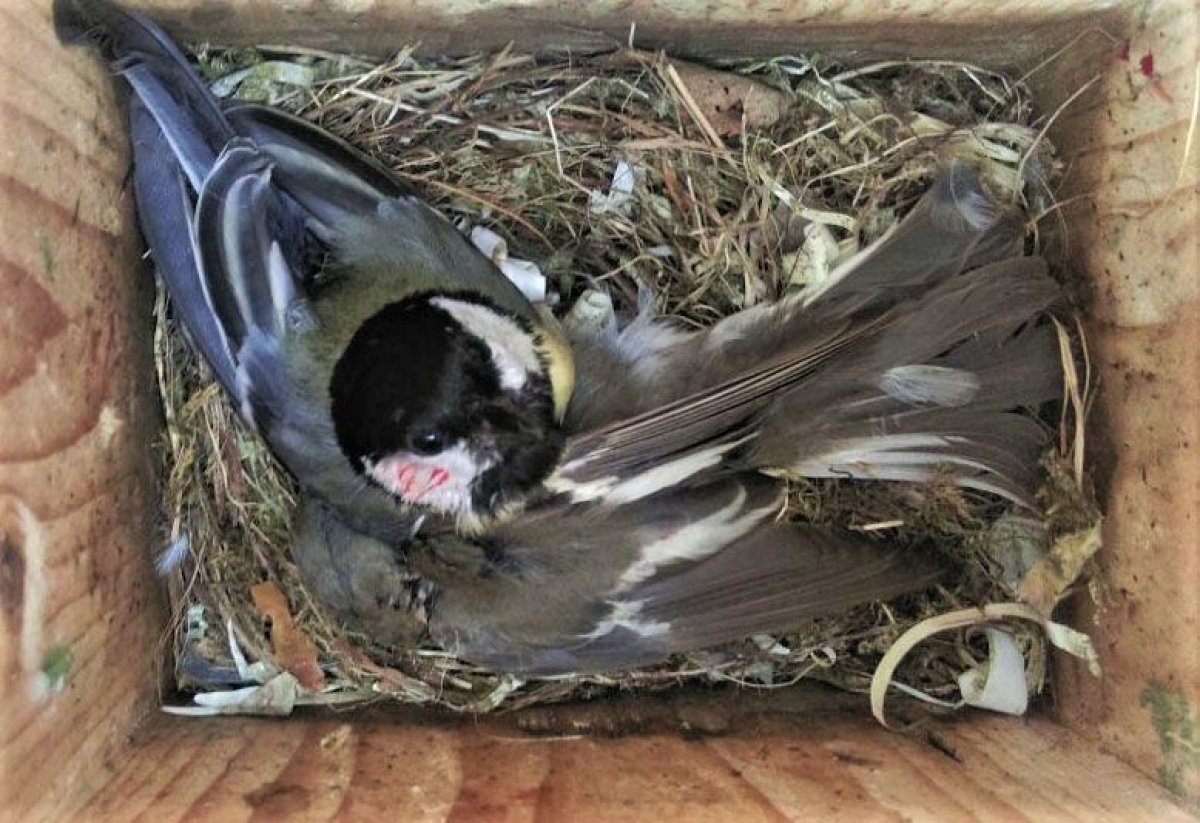The war between two species of bird is gaining momentum as climate change brings great tits and pied flycatchers into increasing contact. Using 10 years of breeding data, researchers discovered an increasing number of dead flycatchers in the nest of great tits—with the latter apparently inflicting fatal head wounds then eating its opponents brains.
Great tits are non-migratory birds that are found across Europe. They are seasonal breeders and normally start to lay eggs around March or April. Pied flycatchers, on the other hand, are migratory, spending winters in West Africa before returning to Europe to breed.
When breeding times overlap, the two species are in direct competition for resources. Pied flycatchers, which are small and agile, try to steal nesting facilities from great tits. Flying around great tits as they attempt to build a nest can drive them away. However, if a flycatcher attempts to enter a nest, the bigger, stronger great tit will kill it and eat its brains.
In 2007, Jelmer Samplonius, from the U.K.'s University of Edinburgh, noticed this brain-eating behavior. "When we opened our nest boxes and noticed dead flycatchers inside, we took them out to dissect and examine them, and found that their skulls had been cracked at the back of the head and the brain was eaten," he told Newsweek.
"This behaviour has been described in the past by other researchers. Great tits are known to eat small bats sometimes and to kill birds smaller than themselves in winter. So partly, they might use this method because it is the easiest way to kill a competitor, and while they are at it, they might as well get some nutrition out of it."
In a study published in Current Biology, Samplonius and colleagues analyzed 10 years worth of data from great tit and flycatcher breeding sites. Their findings showed that certain conditions led to a huge uptick in flycatcher death. Some years, great tits killed nine percent of the male flycatchers.
"We see huge differences among years in the number of victims," Samplonius said. "There is no linear increase, but we found that in areas and years with high tit densities (after warmer winters,) there were more flycatcher victims. Moreover, we found that when flycatcher arrival coincided with great tit egg laying—usually in colder springs—there were more victims among the flycatchers."
One of the driving factors behind the conflict is food availability. Caterpillars serve as a main food source to both species. "Caterpillars respond very strongly to temperature by shifting their timing to be much earlier in the season," Samplonius said.
"Tits can respond to this, because they are resident species, but flycatchers are long distance migrants, so they do not know what is going on at the breeding grounds and are constrained by arrival date.
"The only way in which flycatchers can really respond to generally warming trends (and shifting caterpillar peaks) is by just always migrating earlier, even in cold springs. When springs are cold (they do still occur, albeit less frequently,) great tits delay their breeding and flycatcher arrive highly synchronously with the tits. This leads to a higher degree of competition among the flycatchers."
The biggest conflicts occur in colder springs. Great tits build their nests later and flycatchers arrive earlier. When this happens, the overlap between the two increases and conflicts ensue.

Samplonius says that if temperatures continue to increase, the great tit population will increase as more will survive through the winter. This means they will take up more breeding space.
At the moment, the increase in conflict has not had any impact on population numbers, however, this could change in the future. "If buffers are diminished, population consequences of interspecific competition may become [more] apparent, especially after warm winters that are benign to resident species," the researchers conclude.
Uncommon Knowledge
Newsweek is committed to challenging conventional wisdom and finding connections in the search for common ground.
Newsweek is committed to challenging conventional wisdom and finding connections in the search for common ground.
About the writer
Hannah Osborne is Nesweek's Science Editor, based in London, UK. Hannah joined Newsweek in 2017 from IBTimes UK. She is ... Read more
To read how Newsweek uses AI as a newsroom tool, Click here.








